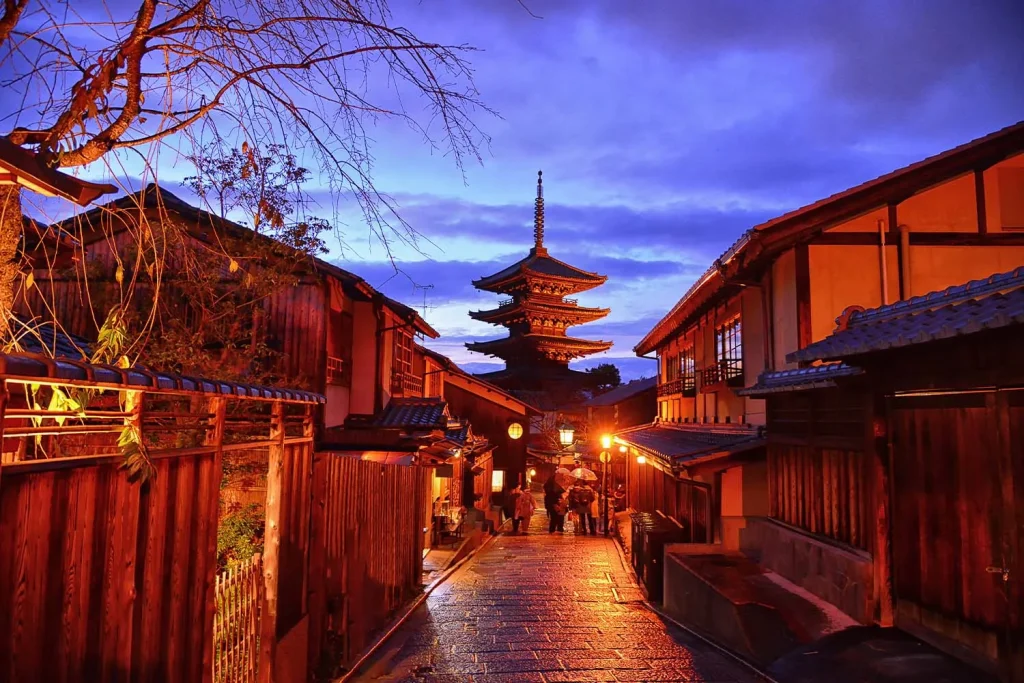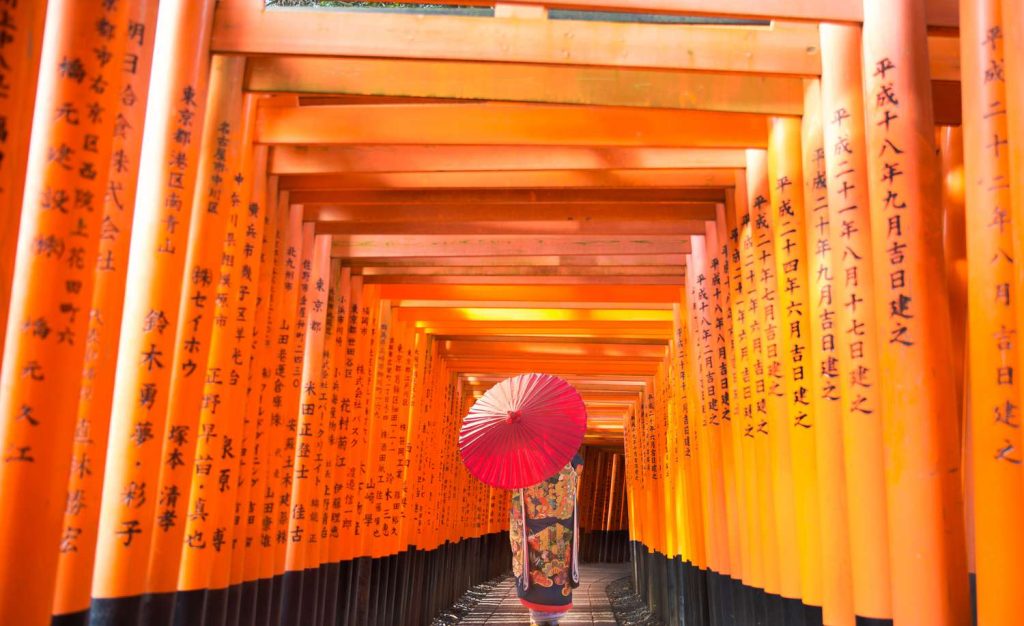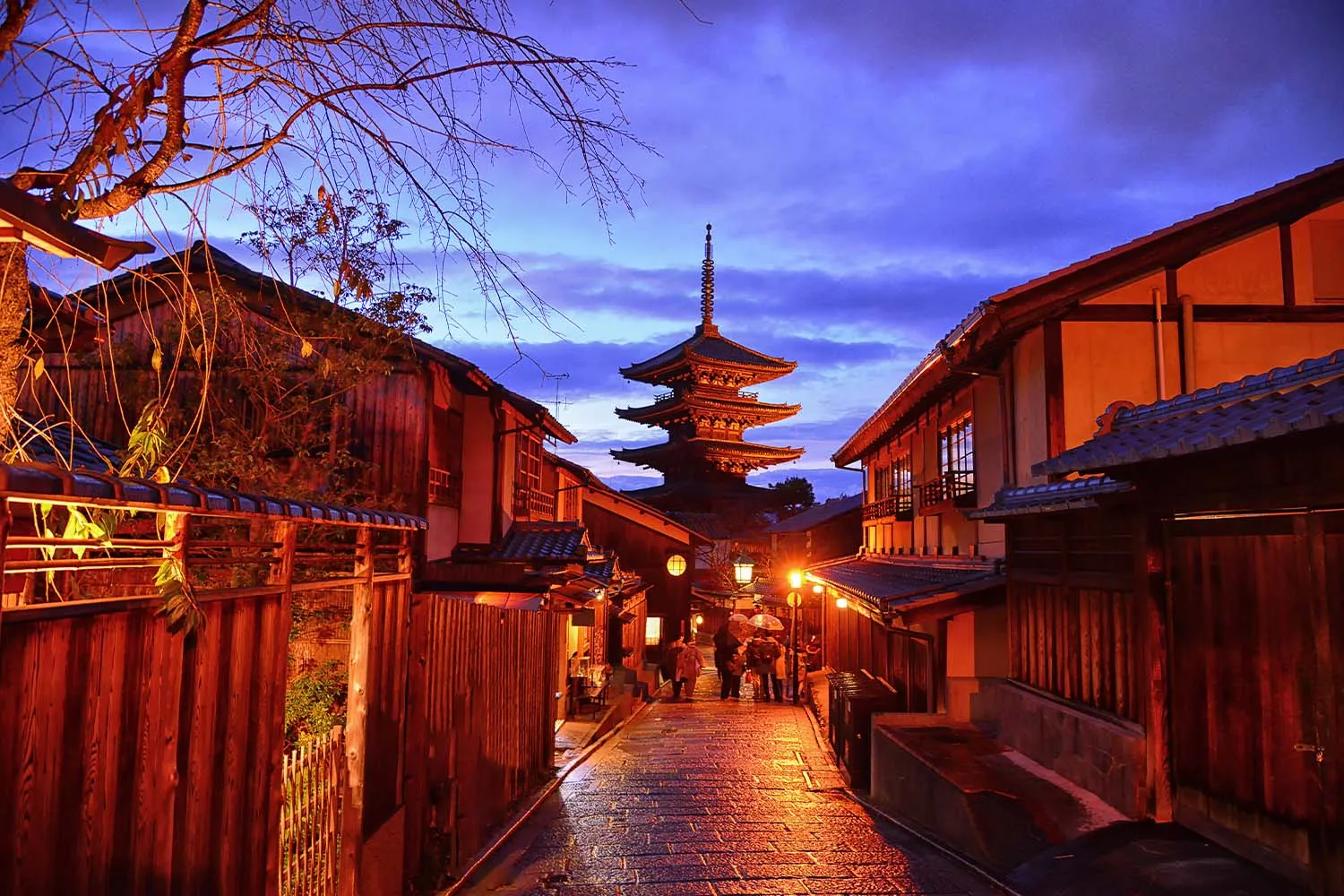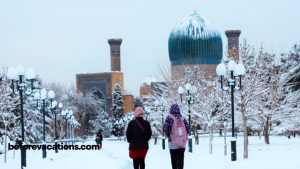Imagine stepping into a living painting, where ancient traditions gracefully intertwine with modern life, and every corner whispers tales of emperors, geishas, and samurai. This is Kyoto, Japan’s former imperial capital, a city that doesn’t just offer sights to see but experiences to feel deep within your soul. Unlike the bustling neon energy of Tokyo, Kyoto invites you to slow down, breathe in the scent of incense from centuries-old temples, and wander through serene bamboo groves that seem to touch the sky.
It’s a destination that promises not just a vacation, but a profound cultural immersion, a journey back in time, and an opportunity to connect with the very essence of Japanese heritage. If you’re seeking an authentic, unforgettable adventure filled with beauty, tranquility, and culinary delights, Kyoto is calling your name. This comprehensive guide is your essential companion to navigating its timeless charm, ensuring you uncover both its iconic landmarks and its most cherished hidden gems.
Getting to the Heart of Tradition: Your Arrival in Kyoto
Reaching Kyoto is remarkably straightforward, thanks to Japan’s world-renowned public transportation system, particularly its efficient Shinkansen (bullet train) network. Most international travelers will arrive at either Kansai International Airport (KIX) or Tokyo’s Narita (NRT) or Haneda (HND) airports. From KIX, the Haruka Express offers a direct and comfortable ride to Kyoto Station in approximately 75-80 minutes, making it the most convenient option for those flying directly into the Kansai region.
If you’re arriving in Tokyo, the Tokaido Shinkansen is your fastest route, whisking you from Tokyo Station to Kyoto Station in about 2 hours and 20 minutes, a journey that offers stunning views of Mount Fuji on clear days. For those with a Japan Rail Pass, the Shinkansen journey is covered, offering excellent value. Kyoto Station itself is a modern marvel, a bustling hub that seamlessly connects bullet trains, local lines, and bus services, serving as the perfect gateway to the city’s myriad attractions.
When to Wander Through Kyoto’s Timeless Beauty
Choosing the ideal time to visit Kyoto can significantly enhance your experience, as each season paints the city in a unique hue. Spring (March to May) is arguably the most popular, as the city bursts into a breathtaking spectacle of cherry blossoms (sakura), typically peaking in early April. While undeniably beautiful, be prepared for larger crowds and higher accommodation prices during this period.
Autumn (October to November) offers another visually stunning experience, with vibrant red and gold foliage transforming the temples and gardens into picturesque landscapes, often considered equally as magical as spring. Summer (June to August) can be hot and humid, but it’s also a time for vibrant festivals like the Gion Matsuri in July, offering a different cultural perspective. Winter (December to February) is quieter, with fewer tourists and the occasional dusting of snow creating a serene, ethereal atmosphere, perfect for those seeking tranquility and a more intimate encounter with the city’s spiritual side.

Finding Your Sanctuary: Where to Stay in Kyoto
Kyoto offers a diverse range of accommodation options, catering to every budget and travel style, from traditional ryokans to modern hotels and charming guesthouses. The area around Kyoto Station is incredibly convenient for first-time visitors, providing easy access to transportation links and major attractions, though it can feel a bit more modern and less traditional. For a more authentic and atmospheric experience, consider staying in the Gion District or Higashiyama, where you’ll find beautifully preserved traditional wooden machiya houses, many converted into boutique hotels or guesthouses, placing you right amidst the historic charm, narrow alleys, and geisha sightings. Central Kyoto offers a good balance of convenience and local flavor, with a mix of hotels, restaurants, and shopping, while areas like Arashiyama are perfect for those seeking tranquility and natural beauty, albeit a bit further from the city center. Booking well in advance, especially during peak seasons, is highly recommended to secure your preferred lodging.

Kyoto’s Iconic Landmarks: Must-See Attractions
Kyoto is a treasure trove of UNESCO World Heritage Sites, each offering a unique glimpse into Japan’s rich history and spiritual heritage. These are the places that define Kyoto’s image and are essential stops on any itinerary.
Kinkaku-ji (The Golden Pavilion): A Glimmering Masterpiece
Kinkaku-ji, officially known as Rokuon-ji, is perhaps Kyoto’s most iconic landmark, a Zen Buddhist temple whose top two floors are completely covered in dazzling gold leaf. Set against a tranquil pond that perfectly reflects its shimmering facade, the pavilion creates an ethereal scene that changes with the light and seasons. Originally built as a retirement villa for Shogun Ashikaga Yoshimitsu in the late 14th century, it was converted into a Zen temple after his death. While visitors cannot enter the pavilion itself, the surrounding stroll garden, designed to be viewed from various points around the pond, offers numerous picturesque angles for appreciation. The sheer beauty and historical significance of Kinkaku-ji make it an absolute must-visit, embodying the aesthetic perfection of traditional Japanese architecture and garden design.
Fushimi Inari-taisha: The Path of a Thousand Torii Gates
Fushimi Inari-taisha is an awe-inspiring Shinto shrine famous for its thousands of vibrant vermilion torii gates, which arch over a network of trails leading into the sacred Mount Inari. Dedicated to Inari, the Shinto god of rice and sake, and patron of business, the shrine is adorned with numerous fox statues, believed to be Inari’s messengers. Walking through the seemingly endless tunnels of torii gates, each donated by individuals or companies, is an unforgettable and highly photogenic experience that can take anywhere from an hour to a full day, depending on how far up the mountain you choose to ascend. The higher you go, the fewer the crowds and the more serene the atmosphere, offering panoramic views of Kyoto city from various viewpoints. This spiritual journey is a powerful symbol of prosperity and a unique cultural immersion.
Arashiyama Bamboo Grove: A Serene Green Oasis
Stepping into the Arashiyama Bamboo Grove feels like entering another world, a towering forest of emerald-green bamboo stalks that stretch endlessly towards the sky, creating a natural cathedral of light and shadow. The rustling sound of the bamboo swaying in the breeze, known as “Kyoto’s Soundscape,” is incredibly calming and meditative. Located in the western outskirts of Kyoto, this iconic grove is one of the city’s most photographed natural attractions. While the main path can get crowded, especially during peak hours, venturing slightly off the beaten track or visiting early in the morning can offer moments of profound tranquility. Nearby attractions include the Tenryu-ji Temple, a UNESCO World Heritage Site with a stunning Zen garden, and the charming Togetsukyo Bridge, offering scenic views of the Hozugawa River.
Gion District: Kyoto’s Geisha Quarter
Gion is Kyoto’s most famous geisha district, a place where traditional wooden machiya houses line narrow streets, and the elusive figures of geiko (Kyoto dialect for geisha) and maiko (apprentice geisha) can occasionally be spotted gliding between teahouses. This historic quarter offers a captivating glimpse into a refined world of traditional Japanese arts and entertainment. Strolling through Hanami-koji Street, especially in the early evening, provides the best chance to witness this unique cultural phenomenon. Beyond the geisha, Gion is home to numerous traditional restaurants, exclusive teahouses, and the Gion Corner, where visitors can experience a condensed performance of various traditional Japanese arts. Remember to be respectful and discreet if you encounter geiko or maiko, as they are often on their way to appointments.
Kiyomizu-dera Temple: The Pure Water Temple
Perched on a hillside in eastern Kyoto, Kiyomizu-dera is one of Japan’s most celebrated temples, renowned for its magnificent wooden stage that juts out from the main hall, offering panoramic views of the city below. Built without a single nail, the stage is supported by massive wooden pillars and is a testament to ancient Japanese carpentry. Below the main hall is the Otowa Waterfall, where visitors can drink from three separate streams, each believed to grant a different benefit: longevity, success at school, and a fortunate love life. The temple complex is particularly stunning during cherry blossom season and autumn, when the surrounding hillsides are ablaze with color. The approach to Kiyomizu-dera is equally charming, lined with traditional shops selling souvenirs, sweets, and pottery, making for a delightful ascent.
Beyond the Postcards: Hidden Gems & Unique Experiences
While Kyoto’s famous landmarks are undeniably captivating, the city truly reveals its depth and charm when you venture off the well-trodden path and embrace its unique cultural offerings. These experiences provide a more intimate and authentic connection with Kyoto’s soul.
The Philosopher’s Path (Tetsugaku no Michi): A Serene Stroll
While often mentioned in guides, the true “hidden gems” of the Philosopher’s Path lie in the smaller, less-visited temples and shrines tucked away along its length. This picturesque stone path follows a canal lined with hundreds of cherry trees, making it breathtaking during spring, but beautiful in any season. Named after Nishida Kitaro, one of Japan’s most famous philosophers, who was said to practice meditation while walking this route, it offers a tranquil escape from the city’s bustle. Beyond the main path, explore the quiet grounds of temples like Honen-in, with its moss-covered gate and serene moss garden, or Anraku-ji, which is only open to the public a few times a year. These smaller sanctuaries provide moments of profound peace and reflection, away from the larger crowds.
Daitoku-ji Temple Complex: A Zen Oasis
For a deeper dive into Zen Buddhism and traditional Japanese garden design, the vast Daitoku-ji Temple complex in northern Kyoto is an absolute must-visit. Unlike many single temples, Daitoku-ji is a collection of over twenty sub-temples, many of which are open to the public and boast exquisite Zen gardens, traditional architecture, and priceless art. Each sub-temple offers a unique atmosphere and a chance to experience the profound tranquility of Zen. Ryogen-in, with its five distinct rock gardens, and Koto-in, known for its beautiful moss garden and bamboo grove, are particularly noteworthy. Spending a few hours here allows for a truly immersive and contemplative experience, far from the tourist throngs, offering a genuine sense of Kyoto’s spiritual heart.
Nishiki Market: Kyoto’s Kitchen and Cultural Hub
Nishiki Market, often called “Kyoto’s Kitchen,” is a vibrant, narrow shopping street lined with over a hundred shops and restaurants, specializing in all things food-related. While it’s famous for its fresh seafood, local produce, and traditional Kyoto delicacies, the true hidden gem here is the opportunity to observe local life and culinary traditions up close. Beyond just tasting, pay attention to the intricate preparation of dishes, the friendly banter between vendors and locals, and the unique ingredients you might not find elsewhere. Look for specialty shops selling traditional Kyoto pickles (tsukemono), dried seafood, Japanese sweets, and artisanal kitchenware. It’s a sensory overload in the best possible way, offering a genuine taste of Kyoto’s culinary soul and a chance to interact with local culture.
Traditional Tea Ceremony: A Moment of Zen
Participating in a traditional Japanese tea ceremony (chanoyu) is more than just drinking tea; it’s an art form, a spiritual practice, and a profound cultural experience. Several establishments in Kyoto offer authentic tea ceremony experiences, often in beautiful traditional settings. This ritualized preparation and serving of matcha (powdered green tea) emphasizes harmony, respect, purity, and tranquility. It’s an opportunity to slow down, appreciate the intricate movements of the host, and savor the moment. Many ceremonies include a brief explanation of the history and philosophy behind the ritual, providing valuable insight into Japanese aesthetics and mindfulness. It’s a truly immersive way to connect with Kyoto’s refined cultural heritage.
Kimono Rental Experience: Step into Tradition
For a truly memorable and photogenic experience, consider renting a traditional kimono or yukata (a lighter summer kimono) for a day. Numerous rental shops throughout Kyoto, particularly in the Gion and Higashiyama districts, offer a wide selection of beautiful garments, along with professional dressing services and even hair styling. Walking through Kyoto’s historic streets dressed in traditional attire allows you to feel more connected to the city’s past and creates stunning photo opportunities against the backdrop of temples and traditional architecture. It’s a fun and respectful way to immerse yourself in Japanese culture, and many locals appreciate the effort visitors make to embrace their traditions.
Savoring Kyoto: A Culinary Journey for the Senses
Kyoto’s culinary scene is as rich and refined as its cultural heritage, offering a gastronomic adventure that goes far beyond sushi. The city is renowned for its delicate and artful cuisine, reflecting centuries of imperial court traditions and Buddhist influences.
Kyo-ryori: The Art of Kyoto Cuisine
Kyo-ryori refers to the traditional multi-course haute cuisine of Kyoto, characterized by its emphasis on seasonal ingredients, subtle flavors, and exquisite presentation. Rooted in the city’s history as the imperial capital and a center of Buddhist temples, Kyo-ryori often features fresh vegetables, tofu, and freshwater fish, prepared with meticulous attention to detail. Dining at a traditional Kyo-ryori restaurant is an experience in itself, often involving private rooms, serene garden views, and impeccable service. While it can be a splurge, it offers an unparalleled insight into Japan’s culinary artistry and a truly unforgettable meal. Look for restaurants specializing in kaiseki (multi-course dinner) or shojin ryori (Buddhist vegetarian cuisine).
Street Food Delights at Nishiki Market
Beyond its fresh produce, Nishiki Market is a fantastic place to sample a wide array of Kyoto’s street food and local snacks. Wander through the bustling arcade and indulge in delights like takoyaki (octopus balls), tamagoyaki (rolled omelet), various types of mochi (rice cakes), and freshly grilled seafood skewers. Don’t miss the opportunity to try yuba (tofu skin), a Kyoto specialty, or matcha flavored treats. It’s a vibrant, informal way to taste your way through Kyoto’s flavors, offering a stark contrast to the refined Kyo-ryori experience but equally authentic and delicious. Be sure to try the local pickles, which are a staple of Kyoto’s diet.
Matcha and Traditional Sweets: A Sweet Indulgence
Kyoto is synonymous with matcha, the finely ground green tea that is central to the Japanese tea ceremony. You’ll find matcha in countless forms here, from traditional ceremonial tea to lattes, ice cream, and an array of exquisite sweets. Seek out traditional tea houses for an authentic matcha experience, often served with a delicate wagashi (Japanese confectionary) designed to complement the tea’s slight bitterness. These sweets are often miniature works of art, reflecting the season and natural beauty. Exploring Kyoto’s cafes and sweet shops for matcha-infused treats is a delightful way to experience this integral part of Japanese culinary culture.
Navigating Kyoto: Getting Around with Ease
Kyoto’s public transportation system is efficient and user-friendly, making it easy to explore the city’s widespread attractions. The bus system is comprehensive and reaches most major sights, often being the most convenient option for temple hopping. Purchase a one-day bus pass for unlimited rides, which offers excellent value if you plan to visit multiple locations. The subway system consists of two main lines (Karasuma and Tozai) that intersect in the city center, providing quick access to key areas and connecting with the JR lines. For attractions closer to the city center, walking is often the best way to soak in the atmosphere, especially in historic districts like Gion and Higashiyama. Taxis are readily available but can be expensive. Consider renting a bicycle for exploring quieter neighborhoods or the scenic riverside paths, offering a different perspective of the city.
Cultural Etiquette & Tips for a Respectful Visit
Respecting local customs and etiquette will greatly enhance your experience in Kyoto and show appreciation for its rich culture. When visiting temples and shrines, always remove your shoes before entering indoor areas, and refrain from taking photos where signs indicate. Bowing is a common form of greeting and showing respect; a slight nod is usually sufficient for visitors. When dining, avoid sticking chopsticks upright in your rice bowl (it resembles a funeral ritual) and never pass food from chopstick to chopstick. Tipping is not customary in Japan and can sometimes be seen as rude. Always carry a small bag for trash, as public bins are scarce. Learning a few basic Japanese phrases like “Arigato gozaimasu” (Thank you) and “Sumimasen” (Excuse me/Sorry) will also be greatly appreciated by locals.
Safety in Kyoto: A Peaceful Journey
Kyoto is widely considered one of the safest cities in the world, with extremely low crime rates. Travelers can generally feel very secure walking around, even at night. However, like any popular tourist destination, it’s always wise to exercise basic precautions. Be mindful of your belongings in crowded areas, especially on public transport or at popular attractions. While serious crime is rare, petty theft can occur. Emergency services are efficient; dial 110 for police and 119 for fire or ambulance. The biggest “danger” you might encounter is getting lost, but with reliable navigation apps and friendly locals, finding your way back is usually easy. Staying hydrated, especially during the humid summer months, is also important.
Budgeting for Your Kyoto Trip: An Overview
A trip to Kyoto can be tailored to various budgets, but generally, Japan is considered a moderately expensive destination. Accommodation will likely be your largest expense, ranging from ¥3,000-¥6,000 for a hostel bed, ¥8,000-¥15,000 for a mid-range hotel, and ¥20,000+ for a luxury ryokan or hotel per night. Food can be surprisingly affordable if you stick to local eateries, ramen shops, and convenience store meals (¥1,000-¥3,000 per meal), while high-end dining can easily exceed ¥10,000. Transportation costs are reasonable, especially with day passes (bus pass around ¥700, subway day pass around ¥600). Attraction entrance fees typically range from ¥300-¥600 per temple or garden. A comfortable mid-range daily budget, excluding flights, might be around ¥10,000-¥15,000 per person, but this can vary widely based on your choices.
Packing Essentials for Your Kyoto Adventure
Packing smart can make your Kyoto trip much more enjoyable. Regardless of the season, comfortable walking shoes are paramount, as you’ll be doing a lot of exploring on foot. For spring and autumn, layers are key, as temperatures can fluctuate throughout the day; a light jacket or cardigan is advisable. In summer, light, breathable clothing is essential, along with a portable fan and umbrella for sun or sudden showers. Winter requires warm layers, a good coat, and possibly gloves and a scarf. Always carry a portable power bank for your phone, as you’ll be using it for navigation and photos. A small backpack for daily essentials, a reusable water bottle, and a travel adapter (Type A/B) are also highly recommended. Don’t forget a camera to capture Kyoto’s unparalleled beauty!
Your Kyoto Story Awaits: Plan Your Trip Now!
Kyoto is more than just a city; it’s an experience, a journey into the heart of Japan’s enduring spirit. From the golden shimmer of Kinkaku-ji to the serene rustle of Arashiyama’s bamboo, and the quiet dignity of a geisha gliding through Gion, every moment in Kyoto is an invitation to discover beauty, history, and profound cultural depth. This guide has provided you with the essential insights and practical advice to navigate its wonders, uncover its hidden gems, and savor its exquisite cuisine. Whether you seek spiritual tranquility, historical enlightenment, or simply a taste of authentic Japanese life, Kyoto promises an adventure that will linger in your memories long after you’ve returned home. Don’t just dream of Kyoto; make it a reality. Start planning your unforgettable journey to Japan’s cultural capital today and let its timeless charm captivate your soul!











